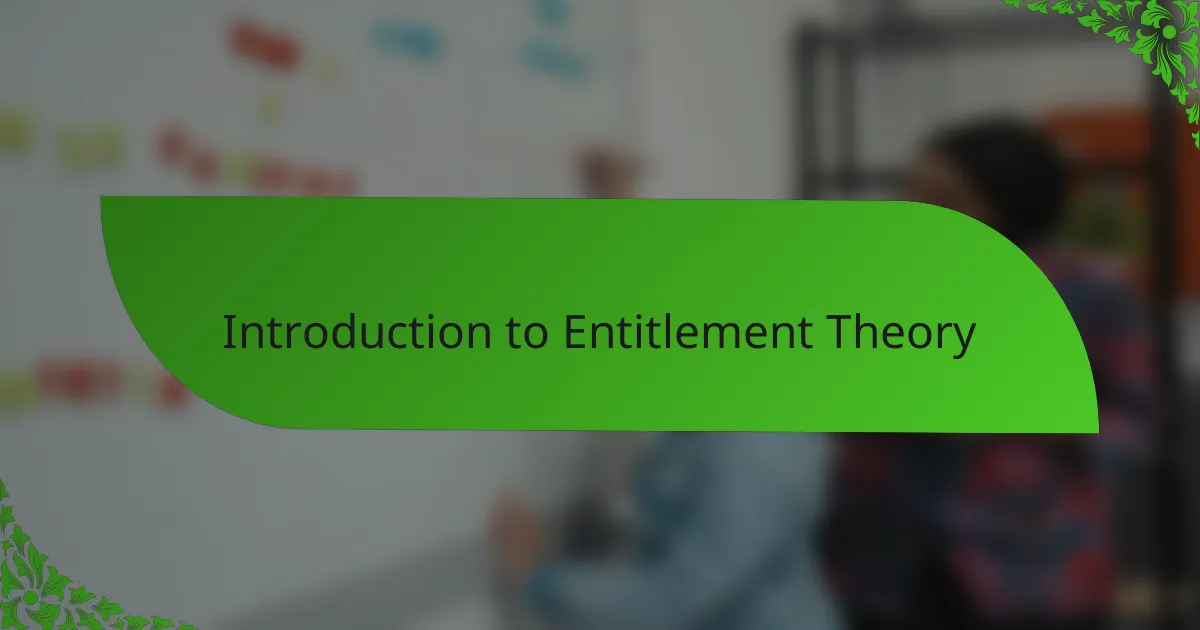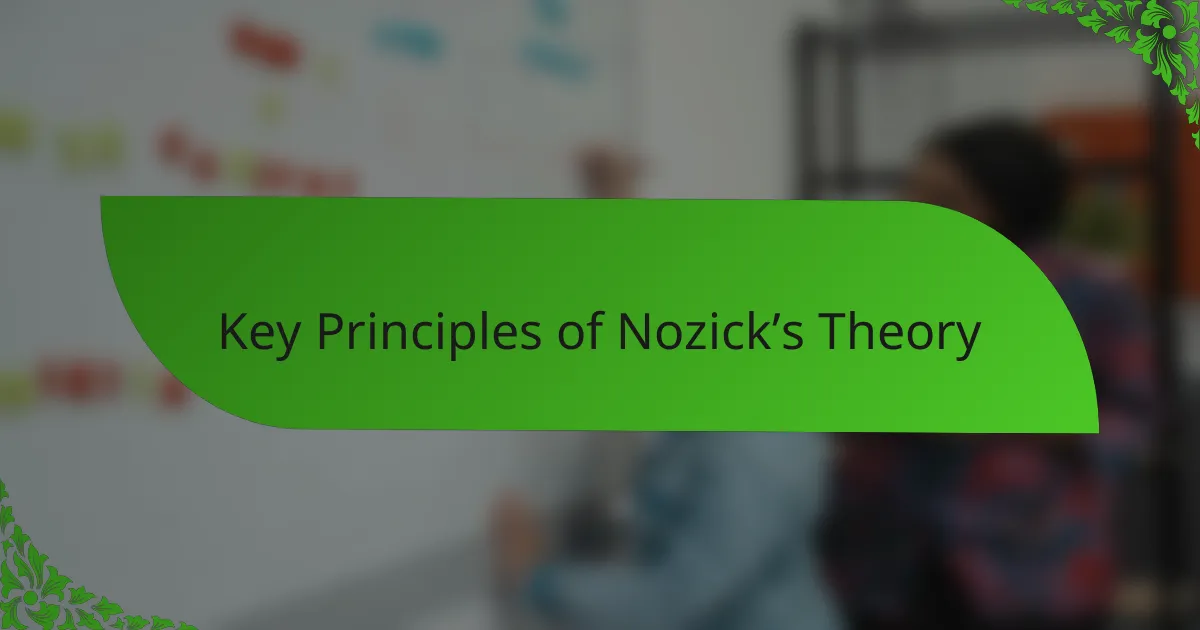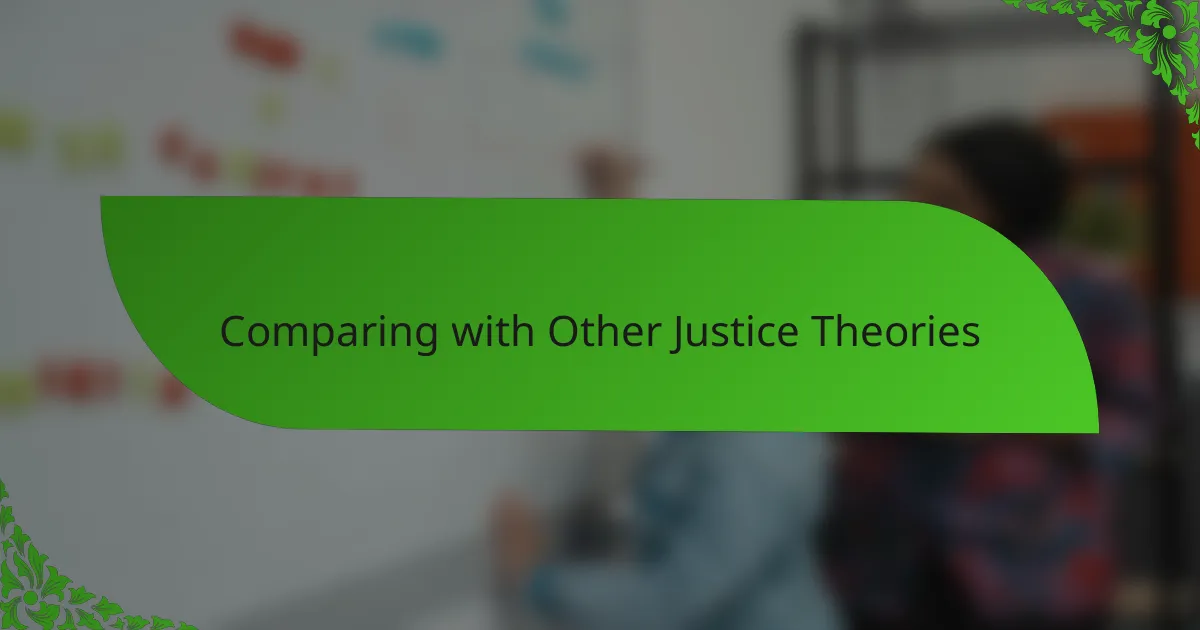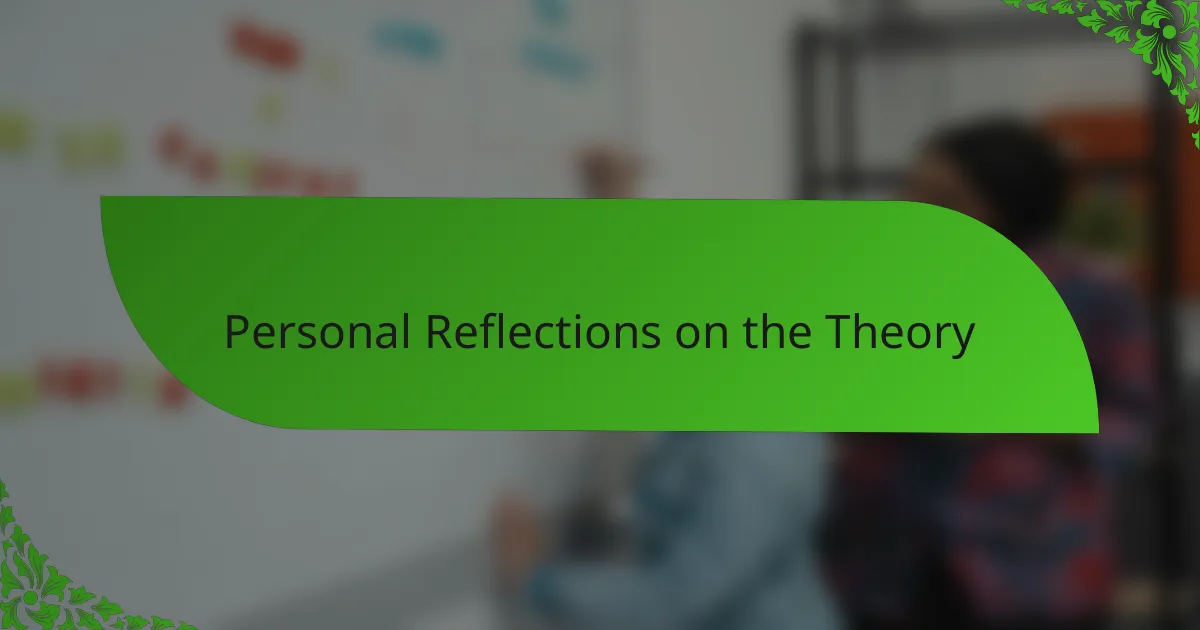Key takeaways
- Nozick’s Entitlement Theory centers on individual rights, asserting that holdings are just if derived from rightful acquisition or voluntary exchange.
- The theory challenges traditional views of justice by minimizing the role of redistributive justice, prompting reflection on fairness and personal obligation.
- While the theory emphasizes personal responsibility and clear principles of ownership, it raises concerns about addressing systemic inequalities and the practicalities of rectifying past injustices.
- Teaching the theory encourages critical thinking and personal engagement, as students grapple with the real-world implications of ownership, justice, and social equity.

Introduction to Entitlement Theory
Entitlement Theory, as Robert Nozick presents it, challenges the typical views of how justice and ownership work. I remember first encountering this theory and feeling a mix of curiosity and confusion—how could property rights be just if they only depended on acquisition and transfer? It made me question the foundations of fairness I had always taken for granted.
What struck me most is how Nozick’s approach revolves around the idea that holdings are just if they come from rightful acquisition or voluntary exchange. This perspective feels both simple and radical. Have you ever thought about how much of what we own truly belongs to us by original right, rather than society’s permission?
The theory also pushes us to consider the minimal role of redistributive justice, which can be unsettling. I found myself wondering: if someone acquires wealth through legitimate means, does anyone else have a claim to it? Nozick’s emphasis on individual entitlement makes us rethink the balance between personal freedom and societal obligation.

Key Principles of Nozick’s Theory
Nozick’s Entitlement Theory stands firmly on three key principles: the principle of justice in acquisition, the principle of justice in transfer, and the principle of rectification of injustice. When I first came across these, I realized how they simplify complex social exchanges into straightforward rules about ownership. Doesn’t it feel empowering to think that if you acquire something fairly, it’s entirely yours—no one can rightfully claim it from you?
The principle of justice in acquisition grabbed my attention because it deals with how things enter our possession originally. Nozick insists that as long as you acquire something without violating others’ rights, your claim is just. Reflecting on this, I asked myself: can a just society really be built on respecting these original acquisitions so strictly?
Then there’s the principle of justice in transfer, which highlights voluntary exchange. I find this fascinating because it respects personal choice—the idea that transferring property through mutual consent maintains justice. Thinking about it, have you ever considered how much of what you own today came through such voluntary transfers, and what that means for fairness in redistribution debates?

Comparing with Other Justice Theories
When I compare Nozick’s Entitlement Theory with theories like Rawls’s Justice as Fairness, the contrast is striking. While Rawls emphasizes redistribution to benefit the least advantaged, Nozick focuses sharply on protecting individual holdings, which felt almost counterintuitive to me at first—how can justice ignore social inequalities?
I remember grappling with the difference between Nozick’s libertarian stance and utilitarian approaches that prioritize overall happiness. Nozick’s insistence on respecting property rights even if outcomes seem unequal challenged my instinct that justice should sometimes override strict entitlement for the sake of the greater good. Have you ever wrestled with choosing fairness in process over fairness in outcome?
Looking at communitarian theories, which stress the community’s role in shaping rights and responsibilities, Nozick’s minimal state seems starkly individualistic. This made me reflect on how much I value community norms versus personal liberty. Is justice better served by collective well-being or the protection of individual entitlements? For me, Nozick’s theory raises that question in a powerful way.

Practical Applications in Philosophy Education
One of the most rewarding aspects of applying Nozick’s Entitlement Theory in philosophy education is watching students grapple with the tension between individual rights and social justice. I often see lively debates sparked when learners confront the idea that justice may not demand redistribution, which challenges many deeply held beliefs. Have you noticed how this theory provokes questions about fairness that feel very personal and immediate?
In my experience, using real-world examples—like discussing property rights in digital spaces or intellectual property—helps bring Nozick’s abstract principles to life. Students begin to see how concepts of acquisition and transfer aren’t just philosophical jargon but influence everyday interactions and policy decisions. It’s fascinating to observe their excitement when they connect theory with their own sense of justice.
Teaching this theory also presents a chance to develop critical thinking by encouraging learners to consider the limits of entitlement. I remember guiding a class through scenarios where rectification—correcting past injustices—becomes crucial, prompting thoughtful reflection on when and how society should intervene. These discussions often leave students more aware of the complexities behind what at first seemed like a straightforward principle.

Evaluating Strengths and Weaknesses
Nozick’s Entitlement Theory impressed me with its clarity and respect for individual rights—it feels empowering to think that justice can be distilled into such clean principles of acquisition and transfer. Yet, I couldn’t help but sense that this simplicity might overlook deeper social complexities. Have you ever wondered if a system so focused on individual holdings can truly address systemic inequalities?
One strength I appreciate is how the theory reinforces personal responsibility and voluntary exchange, which resonates with my belief in individual freedom. However, its minimal role for redistributive justice troubled me; it seems almost dismissive of those who struggle through no fault of their own. Isn’t there a risk that strict adherence to entitlement might perpetuate injustice rather than prevent it?
I also found grappling with the principle of rectification revealing—it acknowledges that past wrongs matter and require correction. Still, I often question how practical or fair it is to determine what counts as just rectification in real life. Does this principle sufficiently balance respect for ownership with the need to repair historical harms? From my perspective, this tension is where Nozick’s theory both shines and falters.

Personal Reflections on the Theory
Reflecting on Nozick’s Entitlement Theory, I found myself constantly torn between admiration and unease. On one hand, the straightforward emphasis on acquisition and transfer felt refreshingly clear—like a map guiding us through the messy terrain of justice. Yet, on the other hand, I couldn’t shake the feeling that this map might leave out crucial landmarks related to social equity and collective welfare.
I recall a moment when discussing the theory with a friend who challenged my views, asking, “What happens to those who never had a fair starting point?” That question stayed with me and pushed me to think more deeply about the limits of strict entitlement. Is it enough to uphold individual rights if the initial conditions are already skewed against fairness?
There’s also a personal appeal in the idea that ownership grounded in rightful acquisition deserves respect. It resonates with my own belief in accountability and the value of voluntary exchange. But I keep asking myself: can this confidence in personal entitlement coexist with a compassionate concern for societal disparities? This tension, I believe, is at the heart of my ongoing engagement with Nozick’s theory.

Tips for Teaching Entitlement Theory
When I teach Nozick’s Entitlement Theory, I often encourage students to question their own intuitions about property and justice. Why does it feel so natural to accept ownership if it’s acquired justly, yet so hard to accept when that means minimal redistribution? Bringing those personal conflicts into the classroom sparks some of the most honest and revealing discussions.
I’ve found that using vivid examples—like imagining a world where digital goods are transferred according to Nozick’s principles—really helps students grasp how acquisition and transfer work in practice. When they see these ideas applied to something familiar, the theory stops feeling abstract and starts feeling real and relevant.
Another tip I swear by is challenging students with hypothetical cases involving rectification. Asking, “How do we fix injustices from the past without violating current entitlements?” often stumps them at first but eventually leads to some of the most thoughtful reflections on justice. I’ve noticed these moments deepen their understanding far beyond memorizing principles.